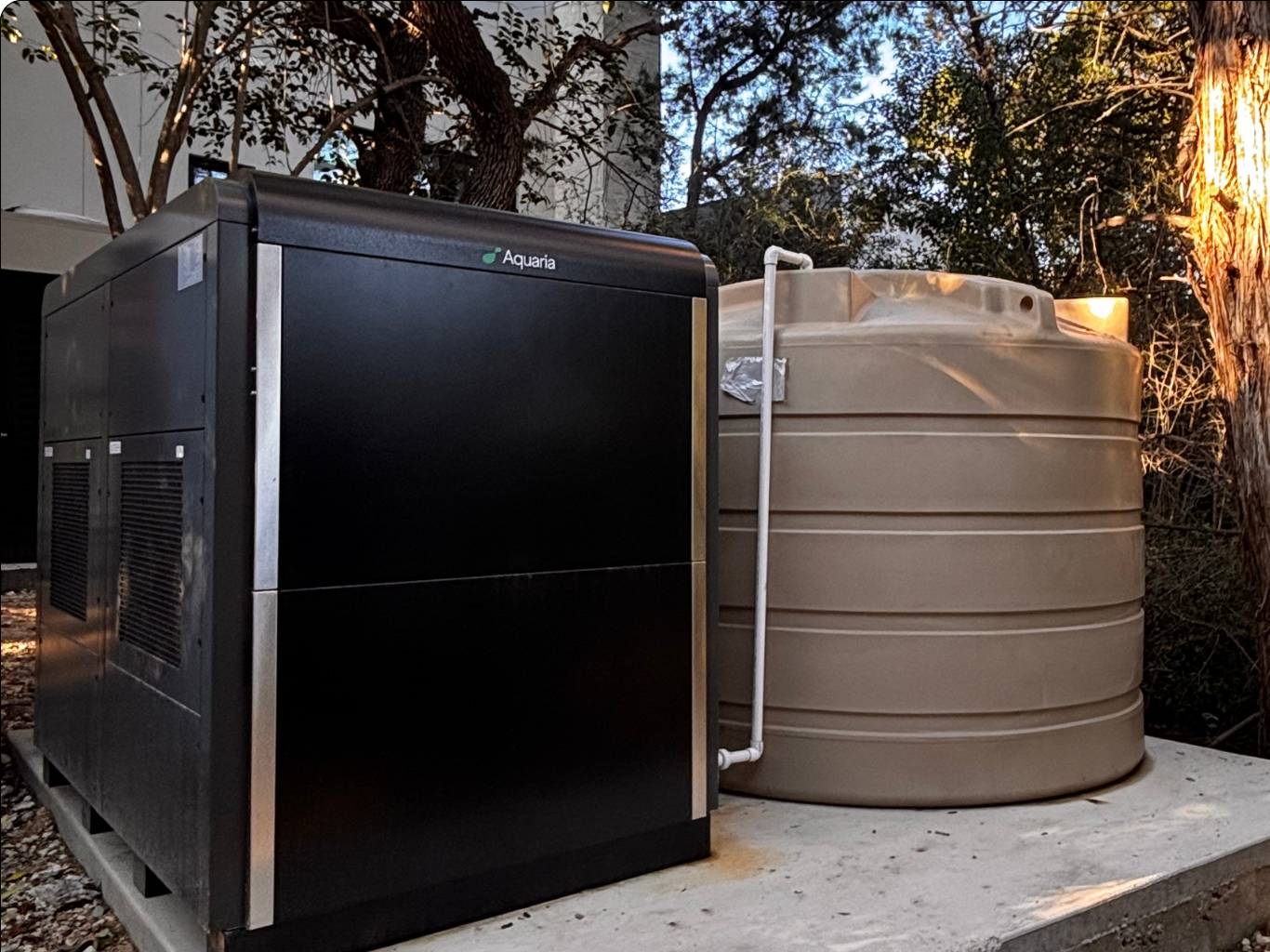Chat with Aquaria
Interested learning more about our products? Call or text us and we’ll connect you with the right product expert.
Interested learning more about our products? Call or text us and we’ll connect you with the right product expert.

An Austin homeowner built a fully resilient home with solar, batteries, and a Hydropack that produces clean water from humidity. Here’s how atmospheric water generation is becoming the new standard for Texas households facing drought and infrastructure failures.

With wells drying up and rain less reliable, Boerne homeowner Brian Schewe turned to Aquaria’s atmospheric water generator for a sustainable, off-grid water backup. As featured on KSAT 12, his story reflects why more Texans are rethinking how they get water.
For as little as $0 upfront.